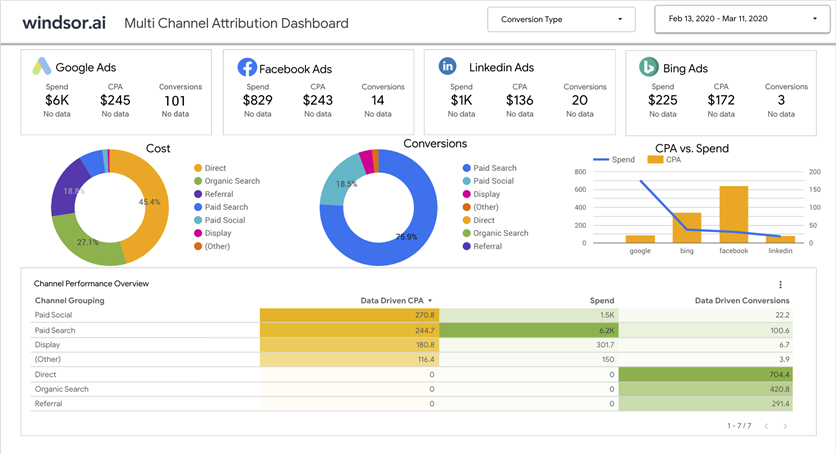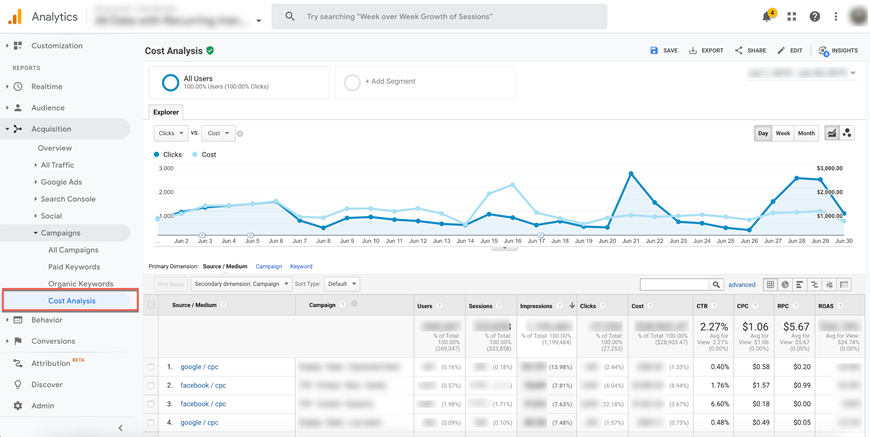How to Track Business-to-Business eCommerce Performance

Tracking Business-to-Business (B2B) eCommerce performance should be a straightforward process. However, many times, it’s made pretty complicated by people implementing complex methods to collect Key Performance Indicators (KPIs) and data-backed insights.
B2B eCommerce, where a company has a commercial relationship with at least one other company, with order transactions solely processed digitally between businesses, itself can be an intimidating business process. It needs to be done professionally and seamlessly online to achieve desired business objectives.
When done well, buying efficiency is improved for wholesalers, distributors, manufacturers, and other types of B2B sellers, thanks to the fact that orders are processed digitally.
Key Steps for Tracking B2B Performance
There are numerous methods and approaches to measure and track the performance of B2B eCommerce businesses. We’ll make this seemingly complex process painless for you by exploring simple steps and methods of tracking your B2B eCommerce performance efficiently.
1. Find Out What Needs to Be Measured
It’s important to understand what you want to measure and what should be measured. Keeping both questions in mind, develop KPIs that aligns well with your sales cycle.
Typically, you need to work around components like customer acquisition, business growth, adoption, and customer retention.
Measuring or tracking B2B performance isn’t child’s play when compared to B2C. Talking from my experience, it is quite demanding. B2B transactions are much more involved. The transactions can be done through multiple channels, and it can take a long time to reach you.
In the B2B landscape, shoppers prefer to conduct research and based on it they decide what they need to buy and from whom. Then, they can place orders via email, phone, or electronic data exchange not sometimes directly from the B2B eCommerce store, unlike B2C.
In such a scenario, the generated revenue that appears on your eCommerce store data reports will be zero. But there is one thing that's certain - your eCommerce website has played a significant role in generating sales.
You can start tracking the performance by tracking users, customers, and usage. These three metrics are the basic KPIs that are most relevant to any B2B eCommerce business.
2. Use Standard Analytics Tools to Collect Performance Data
Moving ahead, determining the best methods for tracking performance is essential. We suggest not to focus on technology solely. Instead of jumping to the advanced performance tracking tools, try using the primary ones like Google Analytics for starters.

Over time when your business grows, you can add other services and use them for better results.
3. Deploy Advanced Performance Tracking Tools as Necessary
To collect and organize all the data from multiple resources in a neat and chic way, you can use a tool like Google Data Studio.
It gives you two options: Single dashboard and Enhanced dashboard.
With the Single Dashboard, you can get hold of data from multiple resources and lay them out in spreadsheets or export it from other systems.
The Enhanced Dashboard presents data to give insight in a meaningful and easy to consume way so your team can manage it easily.

There are other B2B eCommerce website tracking tools available in the market like Moz, SEM Rush, Lead Forensics, Screaming Frog, Lead Feeder, Kissmetrics, and Parse.ly.
Well, these certainly are not the only comprehensive set of analytics tools available to measure site performance. But these are pretty good ones to use.
We don’t recommend building custom measurement systems as it makes this process much more complicated to handle.
Once you start using analytics tools, you may be overwhelmed with the sheer amount of data available or that can be tracked. There’s a possibility you might get confused.
To mitigate that, we’ve listed a few important performance metrics you should look at for starters when tracking the performance of your B2B eCommerce store and business.
Metrics to Check When Tracking B2B Performance
- Traffic Volume - We recommend looking at the traffic volume date-wise and check for any change in patterns. You can also measure the change in volume of traffic during special occasions/events.
- Returning-vs-New Customers - Paying attention to new customers is equally important. You should focus on generating more leads and keep the customers volume sustained.
- Engagement Metrics - Don’t only track the traffic volume, but also check the average time spent by a customer on your website or web page. This will help you understand whether you’re getting the right traffic on a particular page or not.
- Traffic by Channel/Source - Make sure to check from which sources the traffic is being driven to your site.
- Top Landing Pages - Keep checking which page your customers are landing on. It must be designed well to leave an embarking first impression on your customers.
But that’s not nearly enough to determine the performance of your B2B store. You also need to routinely audit as well as revise the measuring strategies you’re using.
4. Audit Your Performance Measuring Methods and Strategies
Ask yourself the following question regarding your business performance measurement methods.
- Do you measure the right elements?
- Is everyone able to understand the collected data and business insights drawn?
- What necessary actions are taken or should be taken from the collected data?
5. Broaden Your Performance Measuring Tactics and Strategies
Don’t stick too rigidly to any given performance measurement tactics you are using.
Since there is always room for improvement, look out for what can be modified for even better results. For example:
- Get Better Insights:
Besides tracking company data, move ahead by tracking salespersons or customers also. It’s easier to track usages, customers, and users by the salesperson. This will give salespeople more opportunity to grow and become a big asset for your brand.
- Use Additional Tracking Tools:
Apart from using simple or old-school measurement tools, you can try out other advanced tools. Since technology is ever growing, new tracking tools are introduced in the market frequently to make this whole process even more seamless, especially for B2B marketers. As such, be open to use new tools and solutions like visit recordings, heatmaps, and conversion funnel tracking for improved results.
In conclusion
B2B eCommerce is a relatively new niche in the eCommerce world. There are many elements of it which are yet to be explored fully. By taking your performance measurement seriously, you’ll be able to take the right actions that lead to your business success.
Remember, a lot is going on in the B2B eCommerce space. The sector is taking off just like B2C. Measure every element and aspect of your B2B performance to keep growing and thrive. Draw accurate data and insights from your measurements and adapt accordingly. Good luck.






















